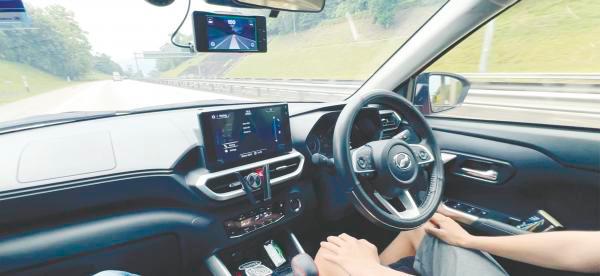PETALING JAYA: An autodrive device for vehicles called KommuAssist 1s, that has sold some 300 units in Malaysia since 2022 for RM3,799 each, has raised safety concerns, especially when it is being advertised as “enabling stop-and-go with no need for human input to resume auto-flow”.
The device also offers “human-like braking and acceleration (with) full speed range down to 0km per hour” and “always on steering control with higher cornering capability and confident lane-line detection up to 100 metres”.
The co-founder and CEO of Kommu Sdn Bhd Wong Kean Wei, whose company is selling the device, said it is driven by bukapilot, which is an open-source driving agent named “openpilot”, and enables “Level 2 autonomous driving functionalities”, including longitudinal and lateral driver assistance.
“There is no specific licensing regulating autonomous driving technology in Malaysia, but I hope to work with authorities such as the Malaysian Institute of Road Safety Research (Miros), Road Transport Department and the Malaysian Automotive Association to help regulate this space,” he told theSun.
While Wong said it is illegal to drive hands-free, his KommuAssist 1s website has videos showing precisely that.
He also said the autodrive device is equipped with an original Advanced Driver Assistance System, which includes features such as adaptive cruise control and lane-keeping assist.
He said the system handles emergency decision-making by relying on predefined algorithms to make decisions and prioritise actions that minimise harm.
“The system continuously processes real-time data to identify and respond to potential hazards quickly.
“Many systems are designed to alert the driver and request human intervention if an emergency is detected.”
He highlighted Tesla’s Q1 2024 Vehicle Safety Report, which stated that drivers using autopilot technology experience about one crash per 7.63 million miles (12,279,295km) driven. In contrast, those not using autopilot experience one crash per 955,000 miles (1,536,924km), showing that human drivers are worse than machine driving.
However, Miros Corporate Communications and Knowledge Management director Hizal Hanis Hashim said excessive reliance on autodrive systems could deteriorate driving abilities, potentially complicating the process of taking control in emergency situations.
“When drivers become accustomed to the automated assistance provided by these systems, they may not actively engage in monitoring road conditions. It is essential to recognise their current limitations and avoid over-reliance on them.”
Hizal Hanis said drivers might overestimate these systems and capabilities while mistakenly believing they are fully autonomous, which can lead to dangerous situations like car crashes.
He said autodrive systems can experience malfunctions or software glitches, for instance incorrect identification and reaction to emergency vehicles with flashing lights.
“The sensors used in these systems such as cameras, radar and Light Detection and Ranging methods also have limitations, such as blind spots, limited range or issues detecting certain objects or road features.”
Hizal Hanis said drivers must acknowledge these limitations for safe driving practices, and while autodrive systems have greatly improved vehicle safety, motorists should still practise attentive driving instead of fully relying on such systems.
He said over-dependence on these systems might lead drivers to pay less attention to the road, resulting in slower reaction times during emergencies.
“Primary safety considerations with autonomous driving features in cars are to ensure a smooth transition between automated and manual control and is critical for safety in human-machine interaction.
“Continuous monitoring and real-time diagnostics are necessary to detect and address any issues promptly.
“Autonomous driving systems must comply with safety regulations and standards set by governing bodies,” he said.









